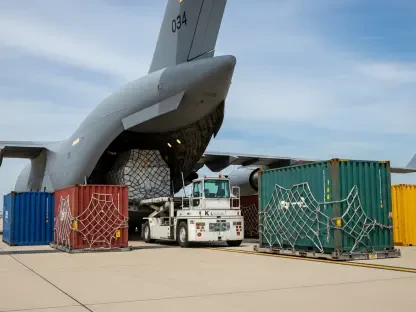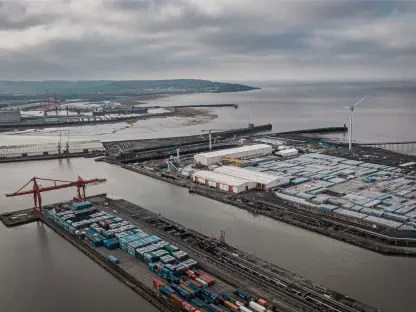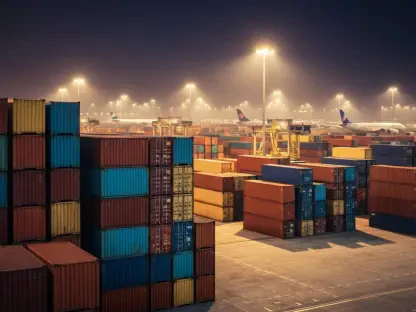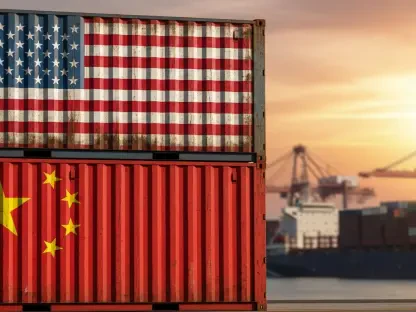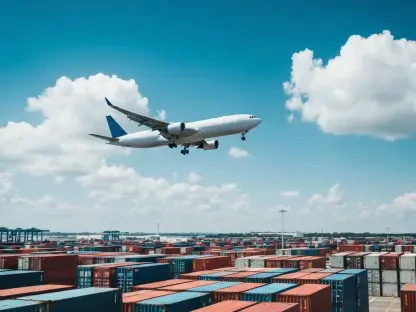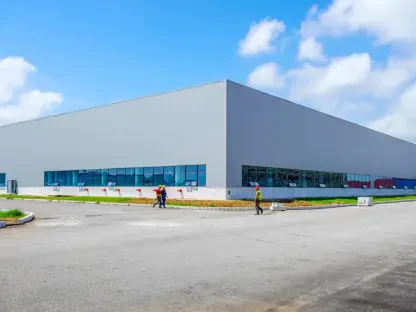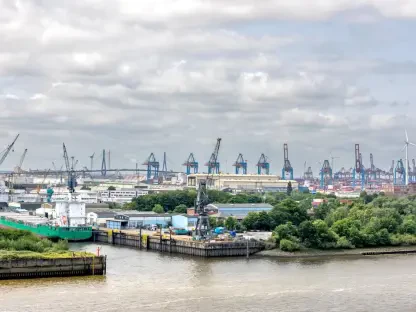The Middle East, long recognized as a pivotal crossroads of global trade, is now emerging as a formidable force in the maritime industry, reshaping shipping dynamics on a worldwide scale. With strategic locations bridging Asia, Europe, and the Americas, the region handles a staggering volume of global trade through its ports and shipping lanes. This roundup dives into the factors propelling this transformation, gathering perspectives from industry leaders across Saudi Arabia, Oman, the UAE, and Qatar. The purpose is to explore how capital, government policies, geographic advantages, and innovative practices are positioning the Middle East as a maritime powerhouse, while comparing diverse opinions on sustaining this momentum.
Unpacking the Forces Behind Maritime Growth
Capital as a Game-Changer for Fleet Expansion
Abundant financial resources in the Middle East have become a cornerstone for rapid growth in the maritime sector. Industry leaders highlight how access to significant capital allows companies to make swift, strategic decisions, such as expanding fleets with high-capacity vessels like Very Large Gas Carriers and Crude Carriers. This financial agility sets the region apart from other global hubs, enabling quick responses to market demands.
However, this rapid asset acquisition comes with challenges. Some experts caution that high turnover in ship trading can lead to regulatory discrepancies in international markets. There’s a growing call for standardized practices to mitigate risks and ensure seamless integration into global shipping frameworks, balancing speed with compliance.
A contrasting view emphasizes the opportunity this capital creates for innovation. Beyond mere expansion, financial strength allows investment in cutting-edge technologies and vessel designs, positioning regional firms to lead rather than follow industry trends. This proactive stance could redefine competitive benchmarks in maritime operations.
Government Policies Steering Economic Diversification
National strategies play a critical role in shaping the Middle East’s maritime landscape, with initiatives like Saudi Arabia’s Vision 2030 driving economic diversification through robust policy support. Experts note that such government-led visions provide a clear roadmap, fostering an environment where the private sector can thrive in shipbuilding, logistics, and port management.
In the UAE, substantial investments in port infrastructure stand as a testament to state commitment, attracting international maritime businesses. Yet, some industry voices express concern over potential over-reliance on public agendas, suggesting that excessive dependence might stifle independent innovation if not balanced with private sector autonomy.
Another perspective underscores the synergy between public and private efforts. When aligned effectively, government backing amplifies corporate initiatives, as seen in local capability-building programs that equip domestic talent for global challenges. This collaborative model is viewed as a sustainable path to long-term growth.
Geographic Edge Amplifying Trade Influence
The Middle East’s strategic position at the nexus of global shipping routes offers an unparalleled advantage, enhanced by modern infrastructure and favorable time zones for international dealings. Industry insights point to how this location facilitates efficient trade flows, making ports in the region critical nodes in supply chains connecting major continents.
Specific cases, such as the UAE’s regulatory frameworks, demonstrate how geography pairs with policy to attract shipping firms. However, some experts warn that location alone isn’t a guarantee of dominance, as emerging competitors in other regions continuously challenge the status quo, necessitating ongoing investment in efficiency and technology.
A differing opinion focuses on the logistical prowess of countries like Oman, where expansive fleet operations capitalize on proximity to key trade lanes. This advantage, coupled with infrastructure upgrades, creates a compelling case for the region to not just participate but lead in global maritime logistics, provided adaptability remains a priority.
Human Capital and Sustainability Driving Future Success
Investment in a young, diverse workforce is a recurring theme among maritime leaders in the region. Training initiatives, including gender-inclusive programs in Oman and cadet schemes in Saudi Arabia at renowned academies, are building a skilled talent pool ready to tackle industry demands with fresh perspectives.
Sustainability also emerges as a key focus, with many experts advocating for decarbonization in asset management and operational strategies. This shift toward green shipping aligns with global environmental goals, reflecting a commitment to balance the region’s traditional energy dominance with innovative, eco-friendly practices.
A nuanced viewpoint questions how this balance will shape long-term identity. While energy transport remains a strength, the push for sustainability could redefine operational norms, requiring careful navigation to integrate new technologies without disrupting established economic models. This tension offers both risk and opportunity for future planning.
Lessons from a Maritime Powerhouse
The Middle East’s maritime surge offers valuable takeaways, particularly the powerful combination of capital, policy, and location driving growth at a pace unmatched by traditional hubs like Singapore. Insights from various leaders suggest that this synergy creates a unique model of development, characterized by scale and speed, which other regions might emulate.
For stakeholders, actionable steps include prioritizing talent development to sustain a skilled workforce and adopting digital tools to enhance operational efficiency. Aligning with sustainability mandates is also critical, as environmental considerations increasingly shape global shipping standards, urging firms to stay ahead of regulatory curves.
Businesses and policymakers can draw from this model by fostering public-private partnerships that leverage state support while encouraging corporate innovation. Emphasizing workforce diversity further strengthens resilience, ensuring a broad base of expertise to navigate complex international markets with confidence.
Reflecting on a Transformative Journey
Looking back, the Middle East’s ascent in the maritime domain stands as a remarkable story of leveraging inherent strengths—strategic location, financial power, and visionary governance—to carve a significant niche in global trade. The insights gathered from diverse industry leaders paint a picture of ambition and adaptability that redefines shipping norms.
Moving forward, the focus shifts to actionable strategies, such as deepening investments in green technologies to lead the charge in sustainable shipping. Exploring collaborations with international partners also emerges as a vital step, ensuring the region remains a central player in evolving trade dynamics while addressing global challenges with innovative solutions.


